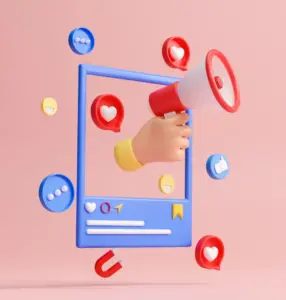
Marketing your embroidery/apparel decoration business to the companies and businesses in both your community and the surrounding ones is one of the best ways to grow your business in 2024. You have many advantages to offer these fellow business owners. As we move into the new year, it’s a great time to evaluate what marketing has worked for you in the past. Use that information to plan out your marketing for the coming year so that you reach this targeted group of potential customers.
In marketing jargon, promoting your business to other businesses is known as business-to-business (B2B) marketing. Effective B2B marketing is often different than marketing to the general public. The message you present speaks to the needs of these business owners, which are often not the same needs that the average
person has. Here are some examples of how you can craft your marketing to demonstrate how you help business owners:
- Showcase how easy it is for customers to identify sales staff on the showroom
floor. Include a photo taken at one of your customers’ businesses where it is easy to tell the staff apart from customers. - In a manufacturing environment, different departments may wear different
colors of workwear, uniforms, or even completely different kinds of apparel. Reinforce this idea with a photo that includes staff in different colors or different kinds of company apparel, such as front office staff in golf shirts and warehouse staff in work shirts. - In a food service setting, the staff working in the “front of the house,” hosting, bartending, and serving customers often wear something different than what the staff working “in the back,” the chefs and dishwashers, for example, are wearing. Creating marketing messages to speak directly to the needs of the different kinds of businesses you want to attract will greatly increase the chance that they will notice your information and possibly reach out to you to find out more information. This is called market segmentation. You sort your customers into different groups based on their similarities. Restaurants, manufacturing companies, schools, clubs, churches, teams, white-collar businesses, car dealers, trades, and companies with less than five employees could all be groups. Maybe you work with farms, horse breeders, or veterinarians. Your groups need to make sense just for your business.
It is easy to see that marketing directed at a white-collar insurance agency business owner might not catch the attention of the local machine shop owner, as their needs for decorated apparel and custom
products are probably quite different. Think about each of the different groups
you serve, and what their needs are.
What problems do you help them solve with your custom products? Create marketing messages showcasing the challenges you solve for each specific group. Email this challenge and your solution out to as many other businesses as you can find that match up with your different customer groups. Rinse and repeat; crafting messages to go to all the local restaurant owners, the local contractors and tradespeople, and the manufacturing operations in your area. There is another category of marketing to build into your plan for the coming year: user-generated content (UGC). UGC is the unexpected bonus of social media. Whenever one of your customers posts a photo or comment on social media and is either wearing or using products you embroidered or decorated, or they mention you or your business or your product, that is by its very definition, user-generated content.
 The good news is that UCG is very powerful, as people are influenced by these kinds of posts since they come across as authentic. When a business owner posts a photo and says, “We love the way we look in our new jackets!,” it is much more compelling than hearing an apparel decorator say, “We can add your logo to some good-looking jackets.” However, the bad news is that you may never see the business owner’s post and then be able to amplify their message by sharing it on your own social media. One way to encourage these organic and influential posts is to simply ask your customers to create them directly! Offer a small discount on their next order if they post about the goods you provided and tag you in the post. Include a free ball cap in their next order if they post a video instead of a photo.
The good news is that UCG is very powerful, as people are influenced by these kinds of posts since they come across as authentic. When a business owner posts a photo and says, “We love the way we look in our new jackets!,” it is much more compelling than hearing an apparel decorator say, “We can add your logo to some good-looking jackets.” However, the bad news is that you may never see the business owner’s post and then be able to amplify their message by sharing it on your own social media. One way to encourage these organic and influential posts is to simply ask your customers to create them directly! Offer a small discount on their next order if they post about the goods you provided and tag you in the post. Include a free ball cap in their next order if they post a video instead of a photo.
Create a unique hashtag for your business and reward any customers who use it to create posts that show your work and add your hashtag. Customers who are younger will understand and usually be eager to earn an incentive in such an easy manner. Put up a sign in your business, add the information to your website, and include a blip at the bottom of your email inviting your customers to tag you in a post when they are sporting their new apparel to earn a discount on their next order.
By the way, when you do get your customers to post on their social media and tag you, you have now added interactive content marketing to your arsenal. You can build on this new tactic in a number of ways. Create social media posts asking specific questions, such as, “Show me your favorite hoodie. Why is it your favorite?” Include a photo of you or a staff or family member in a hoodie. For this strategy to be effective, you have to stay on top of the conversation. Check it daily so that you can like and reply to any comments.
Another post could be a poll, “What is your favorite T-shirt color?” Another example might be something like, “Team Bill or Team Cap Back?” Include a photo of two people (one could be you), one wearing a ballcap the normal way, and the other wearing the ballcap backward. The most effective interactive content is not only engaging but also informative and entertaining.
In order for you to take your business where you want it to go in the coming year, you have to do something to attract the attention of the kinds of customers you want to serve, one way or another.
By developing a specific marketing plan that targets the kinds of customers that are good for you and your business, you now know what needs to be done. You can break your marketing plan down into small, manageable, and actionable steps that you can implement week to week, month after month.
Just think, at the end of 2024, you will be able to look back and evaluate what worked and what needs to be tweaked so that you can keep going and growing your successful business.



